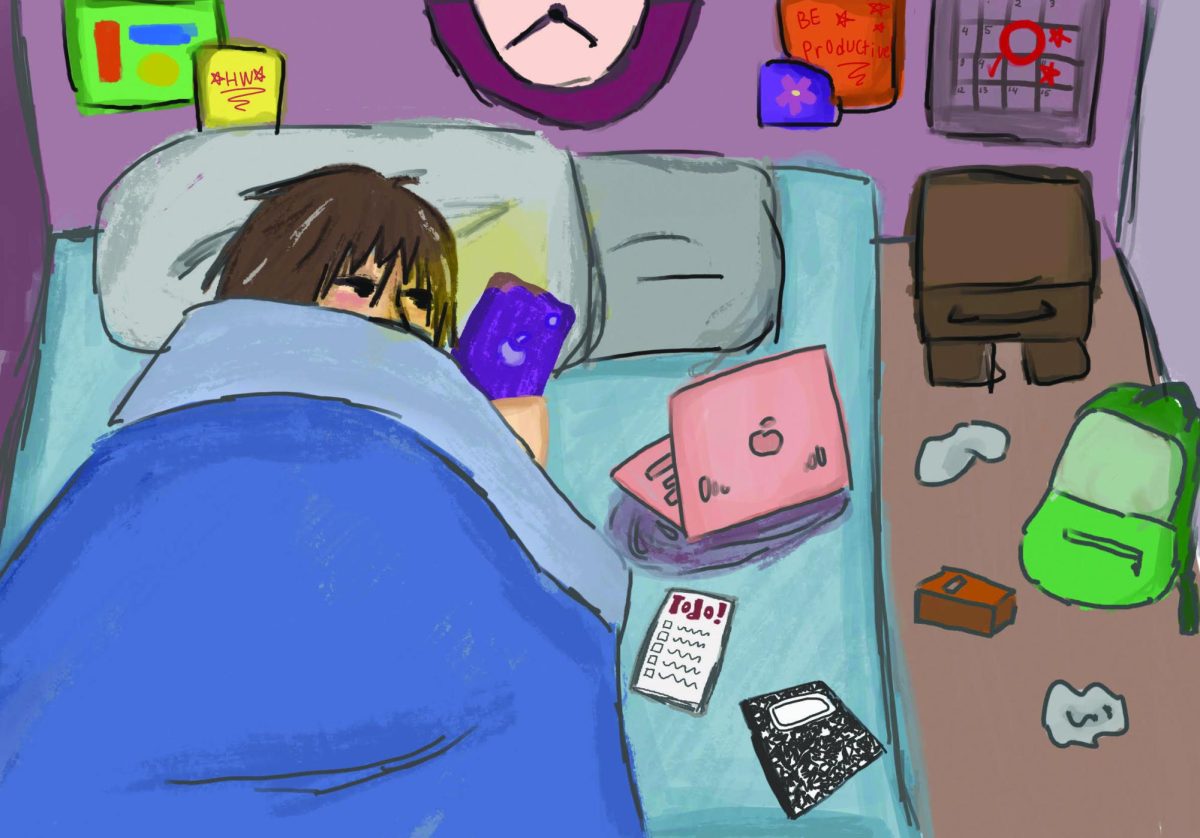When creating assignments for her classes, AP Psychology teacher Sarah Ilie shortens some reading and writing tasks to accommodate for the change in attention span she has noticed in students.
“I am really seeing our younger students, who’ve only ever known a world where they had access to phones, that constantly changed its stimulus material, that their attention spans, their brains are literally wired differently,” Ilie said.
One factor that contributes to poor attention is short-form content on platforms like TikTok and Instagram, Ilie said.
“The videos are purposefully short for a reason,” said Ilie. “Every time you get a new video, that swipe is biologically wired to feel good, so your brain constantly keeps getting this reward.”
Different thinking skills are engaged while watching short-form content versus while reading, meaning individuals who spend more time on TikTok and Instagram get less practice with sustained focus, Ilie said.
“As a child, your brain is getting hardwired into habitual paths,” said Ilie. “If you’ve only been paying attention to 14-second videos over and over, and it doesn’t take long for that to lock in as a habit, then you’re making it harder to sit down and read for 20 minutes straight.”
Just like learning a new language, it is easier to develop attention, thinking and memorizing skills when people are younger, Ilie said.
According toAP Psychologyteacher John Grimaldi, things other than technology, like doodling in notebooks and doing work from other classes, have also been distracting to students.
“After a certain amount of time, human beings, students and teachers can be distracted, and so that part hasn’t really changed,” said Grimaldi. “But what is distracting to them, the mechanism for their further distraction, is different.”
One tendency that may hurt focus and productivity is multitasking, Grimaldi said.
“Each switch from task to task takes significantly more time than anticipated,” said Grimaldi. “You know, the classic example of [when] I’m reading something, and then I look down at my phone. People often underestimate the degree to which the distraction, or the switching of the task, affect their ability to do that primary task.”
Students should be intentional about focusing on one thing at a time to avoid multitasking, Grimaldi said.
“To some certain extent, [multitasking is] unavoidable,” said Grimaldi. “But I think the idea of being intentional, about trying to focus on one thing at a time, if at all possible, is helpful.”
According to Ilie, from what she has noticed, the new cell-phone policy helps students be more attentive for a sustained length of time.
“Even when [students are] not necessarily engaging with the subject at hand, they’re talking together longer about things,” said Ilie. “It used to be that when there was that little brain break time, kids would maybe ask a question, but they would, most of the time, just take out their phone and be on their phone. But now, even if it means for only three minutes, they’re talking about that football game that they’re all gonna go to or their fantasy football league. They’re talking about that instead of just a 10-second thing then going back to their phone. It’s a win.”


